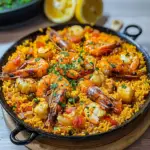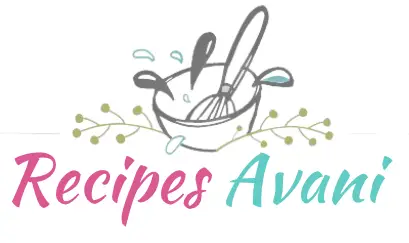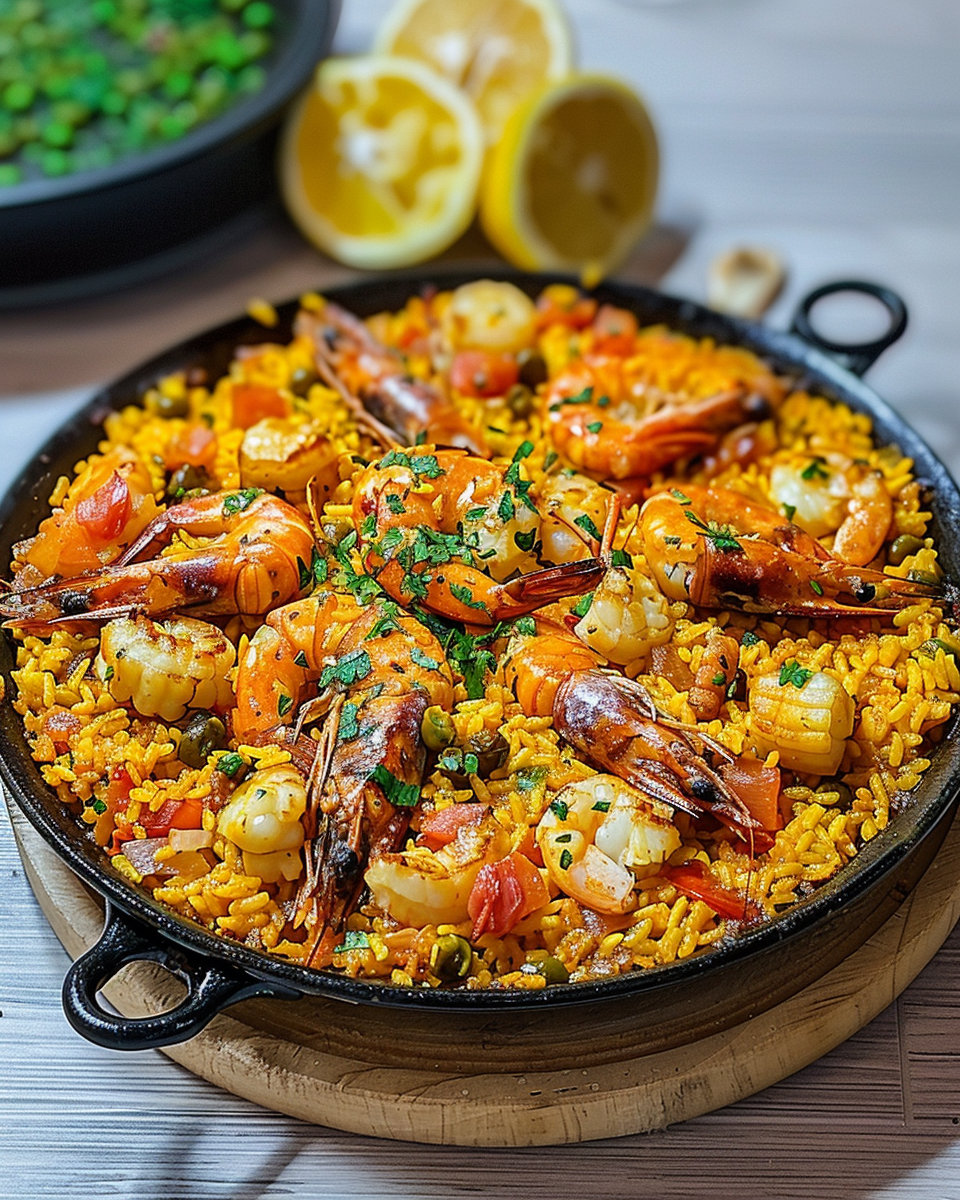What Is Spanish Seafood Paella?
Spanish Seafood Paella is a traditional dish with deep roots in Spanish culture, particularly in the Valencia region. This iconic meal combines rice, chicken, seafood, and a variety of vegetables, all cooked together in a large, shallow pan. The dish is characterized by its vibrant colors, aromatic saffron, and the crispy layer of rice at the bottom, known as the “socarrat.” Let’s explore what makes paella a staple in Spanish cuisine and why it’s a favorite worldwide.
A Traditional Spanish Dish
Paella has a long history in Spain, with origins dating back to the mid-19th century in Valencia. Originally, it was a dish made by farmers and laborers who cooked it over an open fire, using whatever ingredients they had on hand. Over time, paella evolved into a more refined dish, featuring a variety of meats, seafood, and vegetables.
Spanish Seafood Paella, in particular, is a popular variation that emphasizes the use of fresh seafood. The combination of shrimp, mussels, clams, and other shellfish gives the dish a distinctive taste and texture. The addition of chicken provides a hearty base, while the rice absorbs the flavors from the broth, saffron, and sofrito.
A Unique Combination of Flavors and Textures
One of the reasons Spanish Seafood Paella is so beloved is its unique combination of flavors and textures. The rice, a key ingredient, is cooked to a perfect consistency—tender but with a slight bite. The seafood and chicken add a variety of tastes, while the vegetables and aromatics create a rich, fragrant base.
Saffron, a signature spice in paella, gives the dish its golden hue and a subtle earthy flavor. The sofrito, made with sautéed onions, garlic, and tomatoes, adds depth and complexity to the dish. The socarrat, the crispy layer of rice at the bottom, provides a delightful crunch that is highly prized in authentic paella.
With its rich history and unique characteristics, Spanish Seafood Paella continues to be a favorite dish for gatherings and celebrations. In the next section, we’ll discuss the essential ingredients you’ll need to create this dish at home. From rice to seafood to saffron, let’s dive into the key components of Spanish Seafood Paella.
Key Ingredients for Spanish Seafood Paella
To create a delicious Spanish Seafood Paella, you’ll need a variety of ingredients that contribute to the dish’s rich flavors and textures. The traditional combination of rice, chicken, seafood, and saffron creates a distinctive taste that makes this dish a favorite in Spanish cuisine. Let’s explore the essential ingredients that form the foundation of a perfect paella.
The Rice
The type of rice used in paella is crucial. Short-grain rice, like Bomba or Calasparra, is ideal because it absorbs liquids while maintaining its texture. These rice varieties can absorb more broth without becoming mushy, which is key to achieving the perfect consistency in paella. The rice should be firm and slightly al dente, with each grain separated yet cohesive.
The Seafood
Seafood is a central component of Spanish Seafood Paella. Here’s a list of common seafood ingredients:
- Shrimp: Large shrimp, peeled and deveined, add a sweet and juicy flavor to the paella.
- Mussels: Mussels bring a briny taste and a dramatic visual element with their black shells.
- Clams: Clams offer a similar briny flavor to mussels but are smaller and cook quickly.
- Squid: Squid or calamari adds a tender, chewy texture to the paella, complementing the other seafood.
The Saffron
Saffron is the signature spice in paella, giving the dish its vibrant golden color and unique flavor. Saffron threads are soaked in warm water to release their aroma and infused into the broth. Although saffron can be expensive, a little goes a long way, and it’s essential for an authentic Spanish paella.
The Sofrito
Sofrito is a mixture of sautéed onions, garlic, red bell pepper, and tomatoes. It forms the flavorful base of the paella, providing depth and complexity. The sofrito is cooked in olive oil until it becomes soft and fragrant, creating a rich foundation for the rice and seafood.
The Chicken
Chicken thighs, bone-in and skin-on, are used in Spanish Seafood Paella to add a hearty element to the dish. The chicken is seasoned with salt, pepper, and smoked paprika, then browned in the pan to develop a rich flavor before adding it to the paella.
The Broth
Chicken or vegetable broth is used to cook the rice, infusing it with rich flavors. Seafood broth is also an excellent choice if available, as it complements the other seafood ingredients. The broth should be added gradually to the rice, allowing it to simmer and absorb the flavors from the saffron and sofrito.
With these essential ingredients, you’re ready to create a traditional Spanish Seafood Paella. In the next section, let’s go through the step-by-step recipe instructions, guiding you through the entire process of making and assembling this iconic dish. Let’s continue!
How to Make Spanish Seafood Paella
Creating Spanish Seafood Paella involves a series of steps that build the dish’s distinct layers of flavor and texture. This step-by-step guide will help you prepare, cook, and assemble a traditional paella, ensuring each component is cooked to perfection. Let’s dive into the recipe instructions.
Prepare the Ingredients
Start by gathering all the necessary ingredients and preparing them for cooking:
- Season the Chicken: Season the chicken thighs with salt, pepper, and smoked paprika. This adds flavor and color to the chicken.
- Soak the Saffron: Place the saffron threads in a small bowl with warm water to release their aroma. This saffron-infused water will be added to the broth later.
- Clean the Seafood: Peel and devein the shrimp, clean and debeard the mussels, and scrub the clams. This ensures the seafood is ready for cooking.
Heat the Pan
A paella pan or a large, flat skillet is ideal for cooking paella. Heat the pan over medium-high heat and add a generous amount of olive oil. The pan should be wide enough to allow the rice to cook evenly.
Sear the Chicken
Add the seasoned chicken thighs to the hot pan and sear them until golden brown on all sides. This step is crucial for developing a rich flavor. Once the chicken is browned, remove it from the pan and set it aside.
Sauté the Aromatics
In the same pan, add more olive oil if needed, then sauté the following:
- Onions and Garlic: Add finely chopped onions and minced garlic. Sauté until they become soft and fragrant.
- Red Bell Pepper: Add diced red bell pepper and continue sautéing until it’s tender.
- Grated Tomato: Add grated tomato to the mixture, cooking until it reduces slightly and forms a thick paste. This forms the sofrito, the base of the paella’s flavor.
Stir in the Rice and Spices
Add the rice to the sofrito, stirring to coat the grains with the oil. Let the rice cook for 2-3 minutes, allowing it to toast slightly. This step enhances the rice’s texture and flavor. Add the saffron-infused water and a teaspoon of smoked paprika to the rice, stirring to combine.
Pour in the Broth
Carefully pour the chicken broth into the pan, making sure the rice is evenly distributed. Reduce the heat to medium-low and let the paella simmer. Avoid stirring the rice once the broth is added; this allows the socarrat, the crispy layer at the bottom, to form.
Add the Seafood
Nestle the browned chicken into the rice mixture, then arrange the seafood evenly over the paella:
- Shrimp: Place the shrimp on top of the rice, ensuring they are evenly spaced.
- Mussels and Clams: Arrange the mussels and clams in a visually appealing manner. These shellfish open as they cook, indicating they’re done.
- Green Beans: Add chopped green beans for a touch of color and texture.
Simmer and Cook
Let the paella simmer for about 20-25 minutes or until the rice is cooked and the liquid is absorbed. Avoid stirring the rice to maintain the socarrat. If needed, cover the pan with a lid or foil to ensure the rice cooks evenly.
Rest and Serve
Once cooked, remove the paella from the heat and cover it with a clean kitchen towel. Let it rest for about 5 minutes to allow the flavors to meld. This resting period is crucial for achieving the perfect texture.
To serve, garnish with chopped parsley and lemon wedges. The lemon adds a burst of citrusy freshness that complements the rich seafood flavors. Serve the paella directly from the pan for an authentic presentation.
In the next section, let’s explore some tips for success to ensure your paella turns out perfectly. We’ll cover common mistakes to avoid and offer guidance on achieving the ideal socarrat. Let’s continue!
Pro Tips for Making the Perfect Spanish Seafood Paella
Making a great Spanish Seafood Paella requires attention to detail and a few expert tips to ensure the best outcome. From achieving the ideal texture to avoiding common pitfalls, these suggestions will help you create a successful paella that is sure to impress.
Avoiding Common Mistakes
To create the perfect paella, be mindful of these common mistakes:
- Stirring the Rice: Once the broth is added, resist the urge to stir the rice. Stirring can disrupt the formation of the “socarrat,” the crispy bottom layer that is a hallmark of authentic paella. Let the rice cook undisturbed to allow the socarrat to form.
- Overcooking the Seafood: Seafood, particularly shrimp, mussels, and clams, cooks quickly. Add the seafood at the appropriate time to avoid overcooking, which can make it tough and rubbery.
- Underseasoning: Paella should be rich in flavor. Be generous with the saffron, smoked paprika, and other seasonings to ensure a robust taste. However, avoid oversalting, as the seafood can contribute to the dish’s saltiness.
Achieving the Perfect Socarrat
The socarrat is the golden, crispy layer of rice at the bottom of the paella. To achieve this, consider the following tips:
- Even Heat Distribution: Use a large, flat paella pan or skillet to ensure even heat distribution. This allows the rice to cook uniformly and encourages the formation of the socarrat.
- Control the Heat: Start with medium-high heat to sear the chicken and sauté the aromatics. Once the broth is added, reduce the heat to medium-low to allow the rice to cook slowly and form the socarrat without burning.
- Listen for the Socarrat: You can tell when the socarrat is forming by listening for a gentle crackling sound as the rice cooks. This indicates that the rice is crisping up at the bottom.
Presentation and Serving Suggestions
Presentation is key to making paella a memorable experience. Here are some tips for serving and presenting the dish:
- Serve in the Paella Pan: Present the paella in the cooking pan for an authentic look. This also helps maintain the socarrat, allowing guests to dig in and enjoy.
- Garnish with Fresh Herbs and Lemon: Add a touch of freshness by garnishing with chopped parsley and lemon wedges. The citrus flavor complements the seafood and brightens the dish.
- Use a Warm Knife for Slicing: If you need to slice the paella, warm the knife under hot water and dry it. This prevents the rice from sticking and helps maintain clean slices.
By following these tips, you can create a Spanish Seafood Paella that not only tastes amazing but also looks beautiful. In the next section, let’s explore various variations and customizations to help you put your unique twist on this traditional Spanish dish. Let’s continue!


